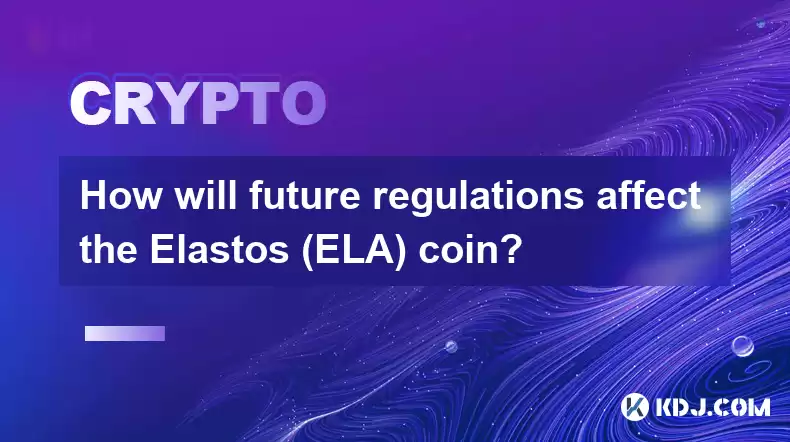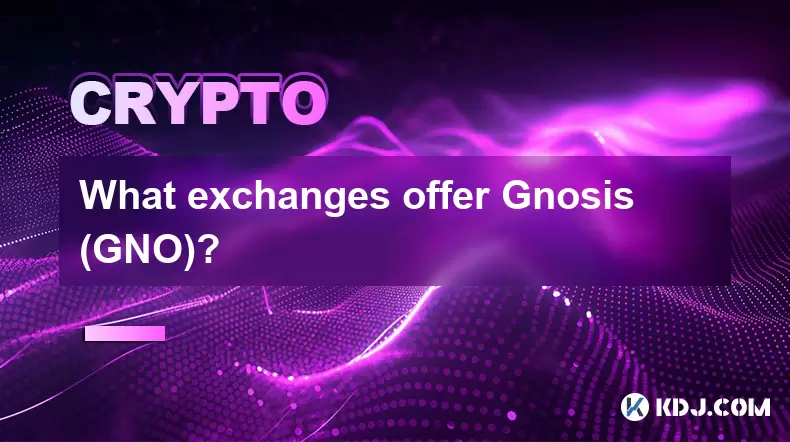-
 Bitcoin
Bitcoin $119000
-2.21% -
 Ethereum
Ethereum $4315
1.01% -
 XRP
XRP $3.151
-3.11% -
 Tether USDt
Tether USDt $0.0000
0.00% -
 BNB
BNB $808.5
-0.71% -
 Solana
Solana $175.8
-4.21% -
 USDC
USDC $0.9999
0.00% -
 Dogecoin
Dogecoin $0.2250
-3.92% -
 TRON
TRON $0.3469
1.77% -
 Cardano
Cardano $0.7818
-3.81% -
 Chainlink
Chainlink $21.47
-2.10% -
 Hyperliquid
Hyperliquid $43.30
-6.81% -
 Stellar
Stellar $0.4370
-2.84% -
 Sui
Sui $3.682
-4.40% -
 Bitcoin Cash
Bitcoin Cash $590.8
2.67% -
 Hedera
Hedera $0.2484
-5.20% -
 Ethena USDe
Ethena USDe $1.001
0.00% -
 Avalanche
Avalanche $23.10
-4.29% -
 Litecoin
Litecoin $119.2
-3.96% -
 Toncoin
Toncoin $3.409
0.90% -
 UNUS SED LEO
UNUS SED LEO $9.016
-1.29% -
 Shiba Inu
Shiba Inu $0.00001304
-3.82% -
 Uniswap
Uniswap $11.18
1.33% -
 Polkadot
Polkadot $3.913
-3.51% -
 Cronos
Cronos $0.1672
-3.08% -
 Dai
Dai $1.000
0.02% -
 Ethena
Ethena $0.7899
-4.70% -
 Bitget Token
Bitget Token $4.400
-1.23% -
 Pepe
Pepe $0.00001132
-5.93% -
 Monero
Monero $257.9
-6.44%
How will future regulations affect the Elastos (ELA) coin?
Navigating the regulatory landscape poses both complexities and opportunities for Elastos, requiring adaptability, compliance, and stakeholder collaboration to ensure the ecosystem's long-term viability in a regulated environment.
Jan 01, 2025 at 04:31 am

Key Points:
- Elastos' Unique Features and Regulatory Implications
- Potential Regulatory Frameworks for Elastos
- Regulatory Considerations for Elastos' Decentralized Applications (dApps)
- Impact of Regulations on Elastos' Ecosystem
- Long-Term Outlook for Elastos in a Regulated Environment
Article:
Elastos: Navigating the Regulatory Landscape
Elastos, a pioneering blockchain ecosystem powering decentralized applications (dApps), stands at the cusp of navigating an evolving regulatory landscape for cryptocurrencies and blockchain technology. As governments worldwide explore frameworks for regulating this emerging industry, it is imperative to examine how future regulations may impact the Elastos coin (ELA) and its ecosystem.
Elastos' Unique Features and Regulatory Implications
Elastos' distinct architecture features a unique combination of blockchain and operating system technologies. This empowers developers to create dApps that operate securely within a more decentralized environment. However, the hybrid nature of Elastos presents regulatory complexities, as traditional frameworks may not fully encompass its functionalities.
Potential Regulatory Frameworks for Elastos
Regulatory approaches to Elastos may vary depending on different jurisdictions. Jurisdictions may classify Elastos as a:
- Security: Its native ELA coin could be deemed a security, subject to strict regulations similar to traditional financial instruments.
- Commodity: ELA may be treated as a commodity, regulated primarily to prevent market manipulation and fraud.
- Utility token: If the primary use case for ELA is within the Elastos ecosystem, it could be regulated as a utility token, falling under more flexible regulations.
Regulatory Considerations for Elastos' Decentralized Applications (dApps)
Elastos' dApps are designed to operate independently within the Elastos ecosystem. However, they must also comply with applicable regulatory frameworks. Considerations include:
- Data privacy and protection: dApps must comply with data protection laws to safeguard user information.
- Financial regulations: dApps involving financial transactions may need to adhere to anti-money laundering (AML) and know-your-customer (KYC) requirements.
- Intellectual property rights: dApps must respect and protect intellectual property rights, including copyright infringement and trademark violations.
Impact of Regulations on Elastos' Ecosystem
Regulations may impact various aspects of the Elastos ecosystem, including:
- Compliance costs: Businesses and developers may need to invest in compliance initiatives to meet regulatory requirements.
- Innovation and adoption: Stringent regulations could potentially hinder innovation and adoption of Elastos and its dApps.
- Market volatility: Regulatory uncertainty may create market volatility for the ELA coin, impacting its price and liquidity.
Long-Term Outlook for Elastos in a Regulated Environment
The long-term prospects for Elastos in a regulated environment will largely depend on its ability to adapt and comply with evolving frameworks. Key factors to consider include:
- Clarity and consistency: Clear and consistent regulatory guidelines will provide certainty for businesses and developers within the Elastos ecosystem.
- Flexibility and innovation: Regulations should strike a balance between protecting consumers and fostering innovation within the Elastos ecosystem.
- International collaboration: International cooperation and harmonization of regulations would facilitate the global adoption of Elastos and dApps.
FAQs
Q: What are the potential risks of regulatory action on Elastos?
A: Regulatory actions may introduce compliance costs, market volatility, and impact the availability and functionality of Elastos and its dApps.
Q: How can Elastos prepare for future regulations?
A: Elastos should engage with regulators, develop compliance strategies, and promote transparency and ethical practices within its ecosystem.
Q: What is the role of the Elastos community in shaping the regulatory landscape?
A: The Elastos community can provide valuable feedback and advocate for fair and balanced regulations that support innovation and protect consumers.
Disclaimer:info@kdj.com
The information provided is not trading advice. kdj.com does not assume any responsibility for any investments made based on the information provided in this article. Cryptocurrencies are highly volatile and it is highly recommended that you invest with caution after thorough research!
If you believe that the content used on this website infringes your copyright, please contact us immediately (info@kdj.com) and we will delete it promptly.
- Bitcoin, CPI, and Market Fears: Navigating the Crypto Landscape
- 2025-08-12 15:10:13
- BTC Traders Eye ETH Targets as CPI Looms: A New York Minute
- 2025-08-12 15:10:13
- Ethereum, Cold Wallets, and Presales: What's Hot Now?
- 2025-08-12 15:30:12
- Bitcoin, XRP, and Monetary Alternatives: Navigating the Crypto Landscape in 2025
- 2025-08-12 15:30:12
- XRP Breakout Watch: Institutional Volume Signals Potential Surge
- 2025-08-12 15:35:19
- XRP, Market Cap, and Institutional Adoption: A New Era for Crypto?
- 2025-08-12 15:35:19
Related knowledge

How to purchase Aragon (ANT)?
Aug 09,2025 at 11:56pm
Understanding Aragon (ANT) and Its PurposeAragon (ANT) is a decentralized governance token that powers the Aragon Network, a platform built on the Eth...

Where to trade Band Protocol (BAND)?
Aug 10,2025 at 11:36pm
Understanding the Role of Private Keys in Cryptocurrency WalletsIn the world of cryptocurrency, a private key is one of the most critical components o...

What is the most secure way to buy Ocean Protocol (OCEAN)?
Aug 10,2025 at 01:01pm
Understanding Ocean Protocol (OCEAN) and Its EcosystemOcean Protocol (OCEAN) is a decentralized data exchange platform built on blockchain technology,...

Where can I buy UMA (UMA)?
Aug 07,2025 at 06:42pm
Understanding UMA and Its Role in Decentralized FinanceUMA (Universal Market Access) is an Ethereum-based decentralized finance (DeFi) protocol design...

What exchanges offer Gnosis (GNO)?
Aug 12,2025 at 12:42pm
Overview of Gnosis (GNO) and Its Role in the Crypto EcosystemGnosis (GNO) is a decentralized prediction market platform built on the Ethereum blockcha...

How to buy Storj (STORJ) tokens?
Aug 09,2025 at 07:28am
Understanding Storj (STORJ) and Its Role in Decentralized StorageStorj is a decentralized cloud storage platform that leverages blockchain technology ...

How to purchase Aragon (ANT)?
Aug 09,2025 at 11:56pm
Understanding Aragon (ANT) and Its PurposeAragon (ANT) is a decentralized governance token that powers the Aragon Network, a platform built on the Eth...

Where to trade Band Protocol (BAND)?
Aug 10,2025 at 11:36pm
Understanding the Role of Private Keys in Cryptocurrency WalletsIn the world of cryptocurrency, a private key is one of the most critical components o...

What is the most secure way to buy Ocean Protocol (OCEAN)?
Aug 10,2025 at 01:01pm
Understanding Ocean Protocol (OCEAN) and Its EcosystemOcean Protocol (OCEAN) is a decentralized data exchange platform built on blockchain technology,...

Where can I buy UMA (UMA)?
Aug 07,2025 at 06:42pm
Understanding UMA and Its Role in Decentralized FinanceUMA (Universal Market Access) is an Ethereum-based decentralized finance (DeFi) protocol design...

What exchanges offer Gnosis (GNO)?
Aug 12,2025 at 12:42pm
Overview of Gnosis (GNO) and Its Role in the Crypto EcosystemGnosis (GNO) is a decentralized prediction market platform built on the Ethereum blockcha...

How to buy Storj (STORJ) tokens?
Aug 09,2025 at 07:28am
Understanding Storj (STORJ) and Its Role in Decentralized StorageStorj is a decentralized cloud storage platform that leverages blockchain technology ...
See all articles

























































































